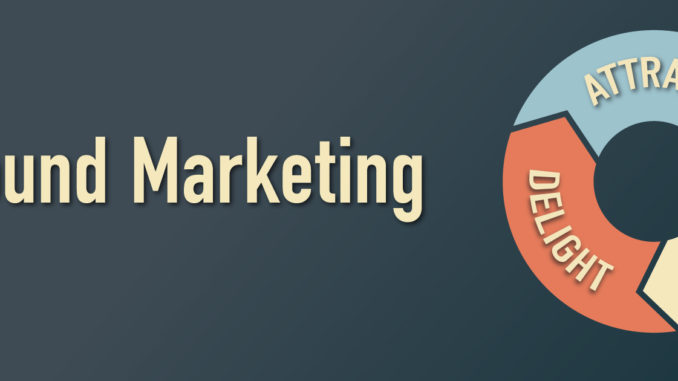
Most people are familiar with Outbound Marketing, where a company interrupts the audience with content they don’t want: TV and radio commercials, YouTube ads, pop-up ads, banner ads, etc. On the other side of the coin, Inbound Marketing provides valuable information and content to solve the problems of the audience and create connections. You can think of it as earning attention through Inbound Marketing, or buying attention through Outbound Marketing. The key is to deliver helpful solutions and have a positive impact on your audience and your business. It’s about more than just attracting customers, you also need to support and help them grow after you’ve made the sale.
The three steps of Inbound Marketing that continue in a cycle are Attract, Engage, and Delight.
Bringing the right people to your website or business is the first step. Getting the right customers through the door, figuratively or literally, will help your business by focusing your attention on the right people. You can’t sell the unsellable, so save your energy and engage with the right prospects.
Attract potential customers by improving your search ranking, creating blog posts and/or videos, asking and answering questions on social media, offering free guides/ebooks, or anything else that will make your business useful and reliable. You don’t need to focus on the sale, focus on building a relationship and the sales will practically take care of themselves.
Follow up with the people who take action on your website. Get their email and send them more useful content. We’re still not pushing the sale on the customer, we’re building the relationship and understanding the customer better.
With a better understanding of each customer, you can provide individualized information that’s going to be the most value to them. Give them something memorable and shareable in the format they prefer. This is where it’s helpful to have smart content that is released to appropriate customers. You’ll want multiple pieces of content that get fairly specific and are useful to a smaller group of customers, then share the content with the customers that fit with that content.
Hubspot coined the term Inbound Marketing in 2006 and has more information and resources here: https://www.hubspot.com/inbound-marketing
